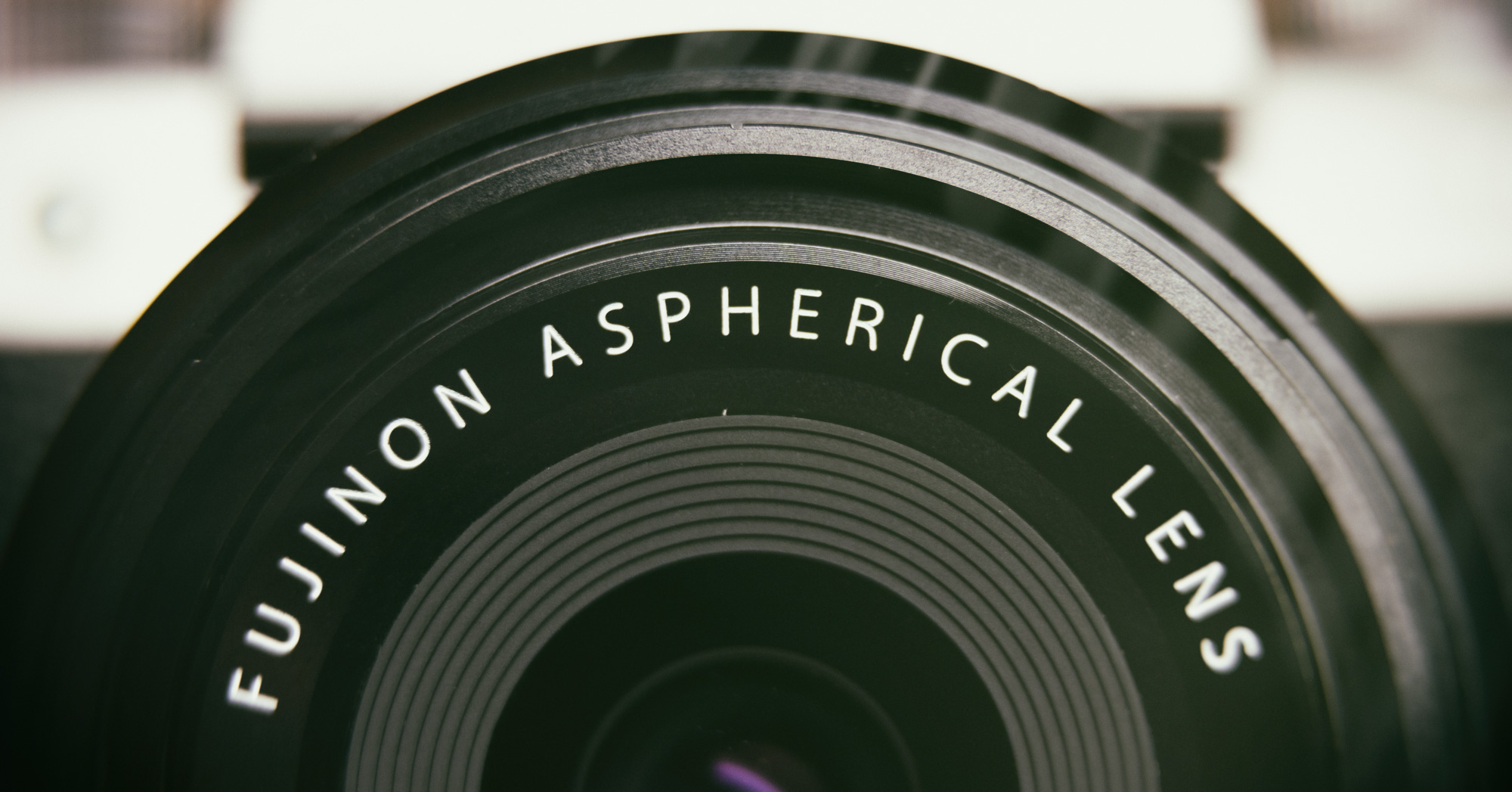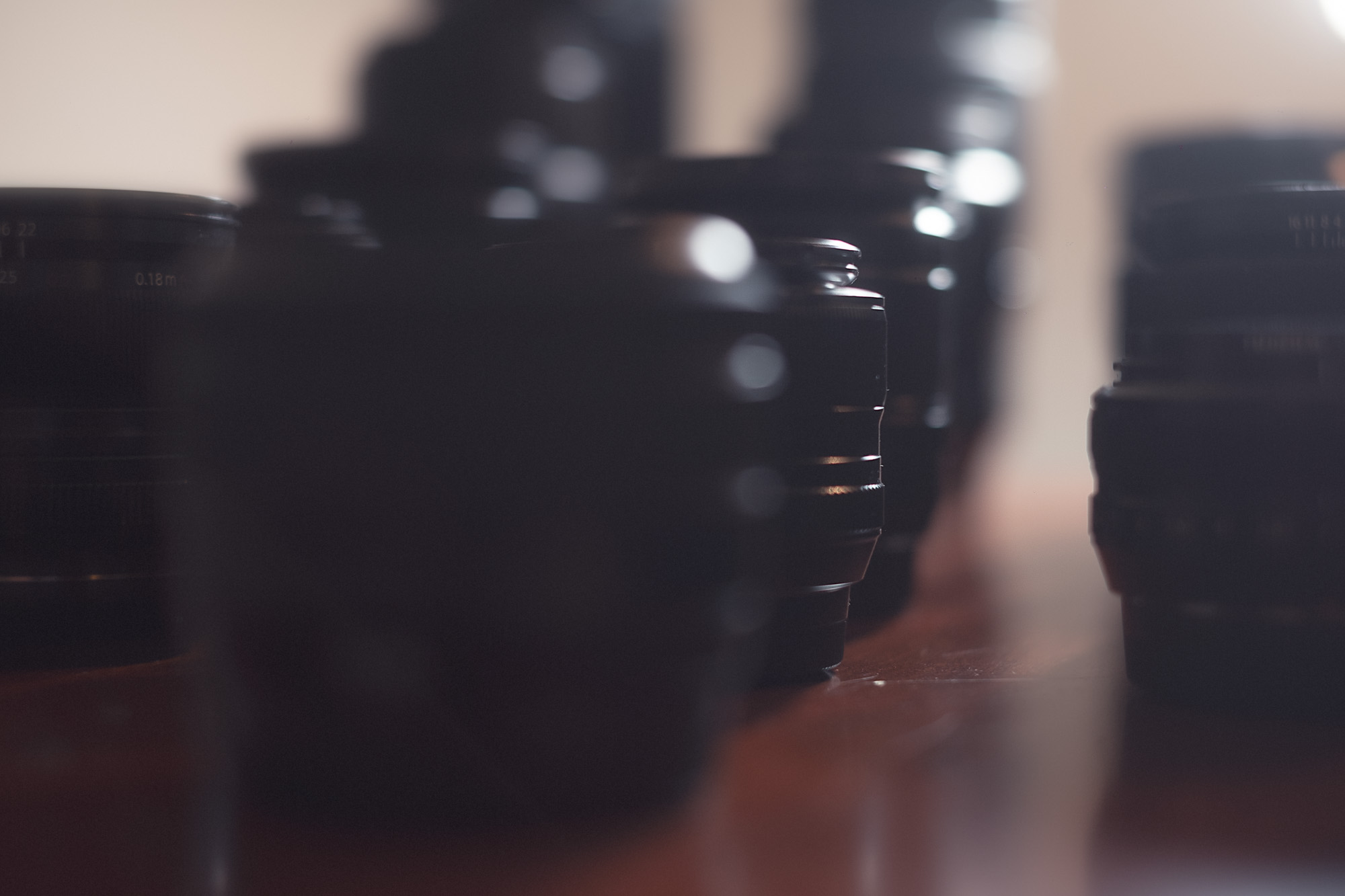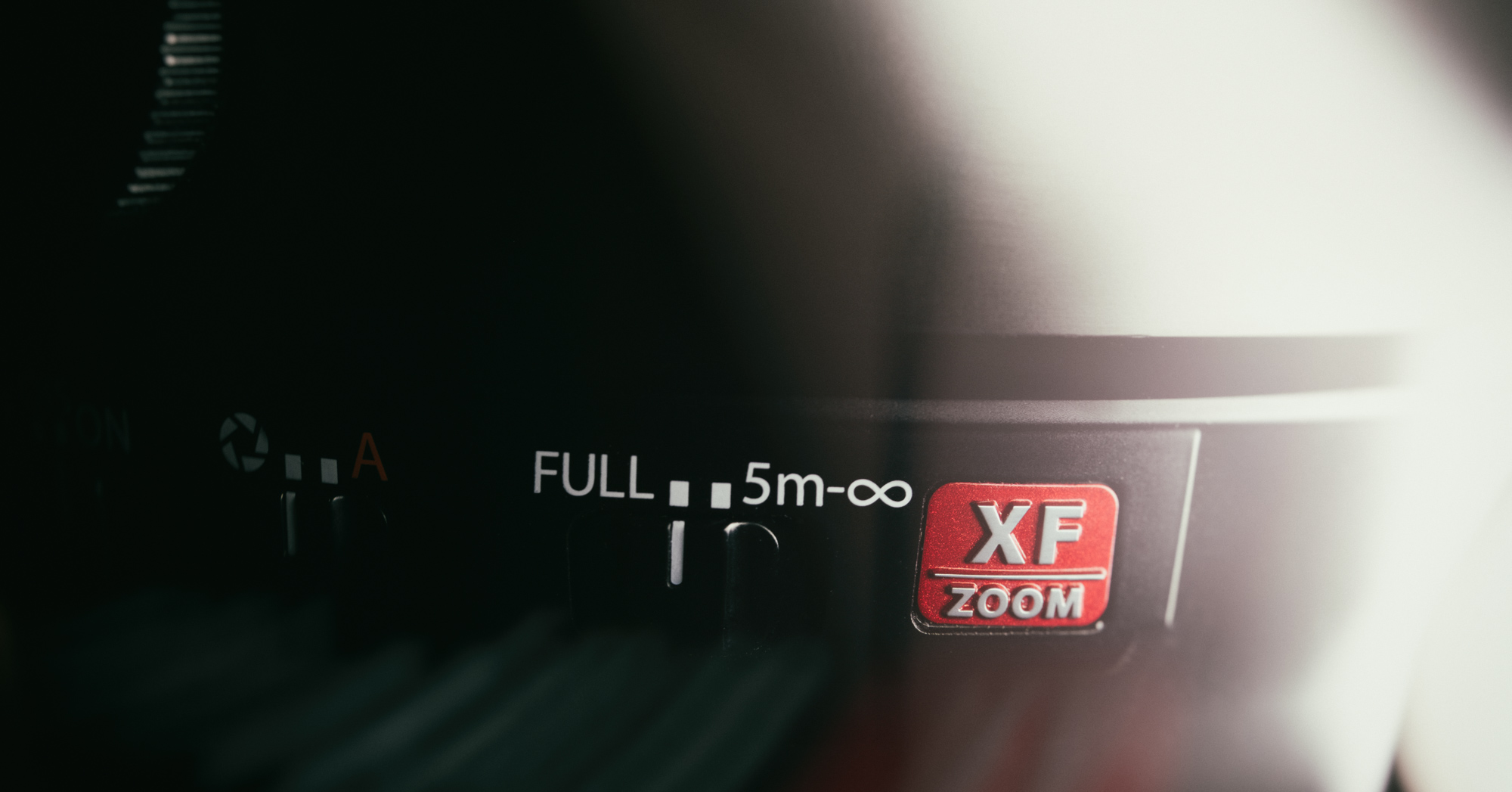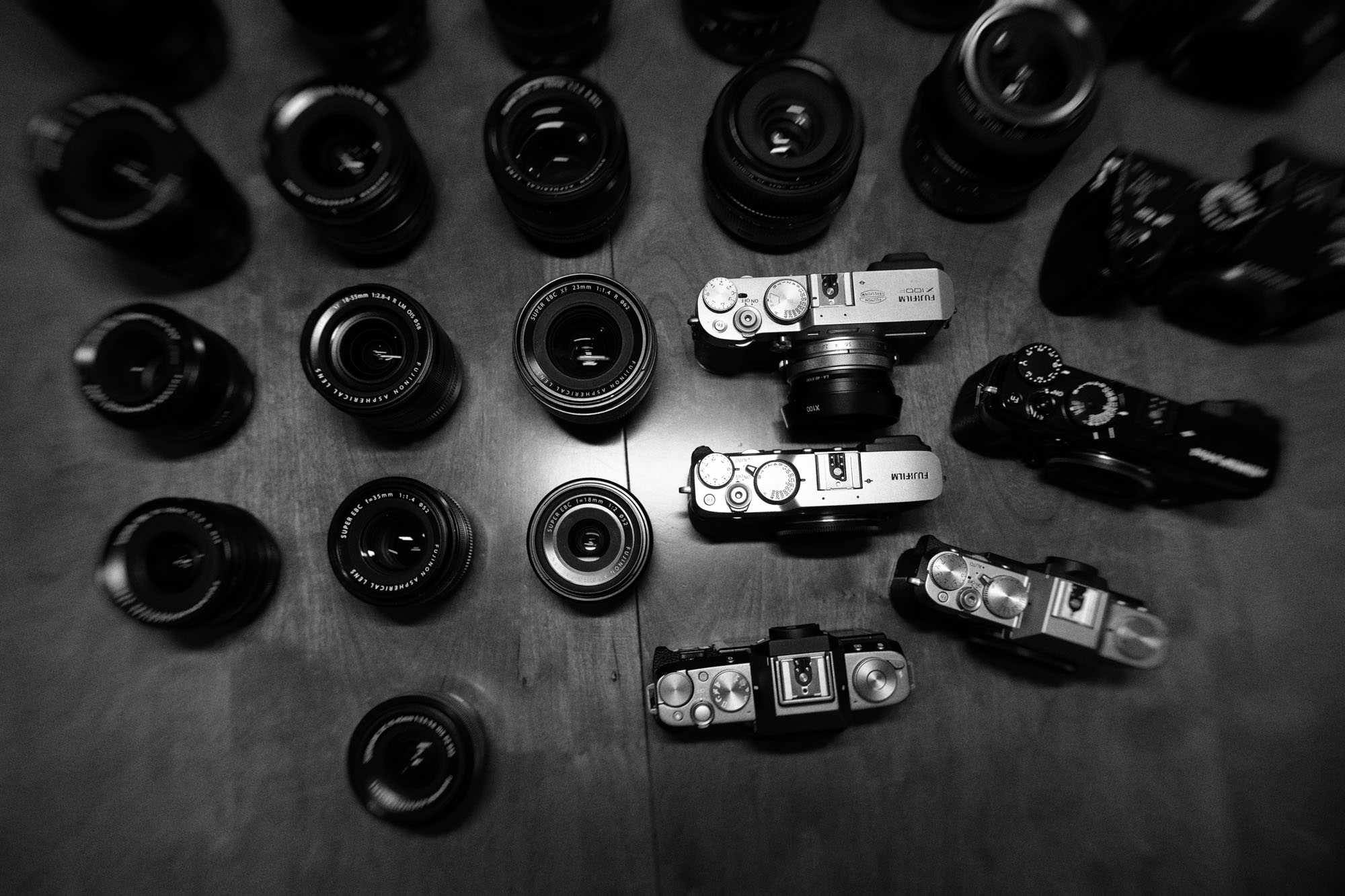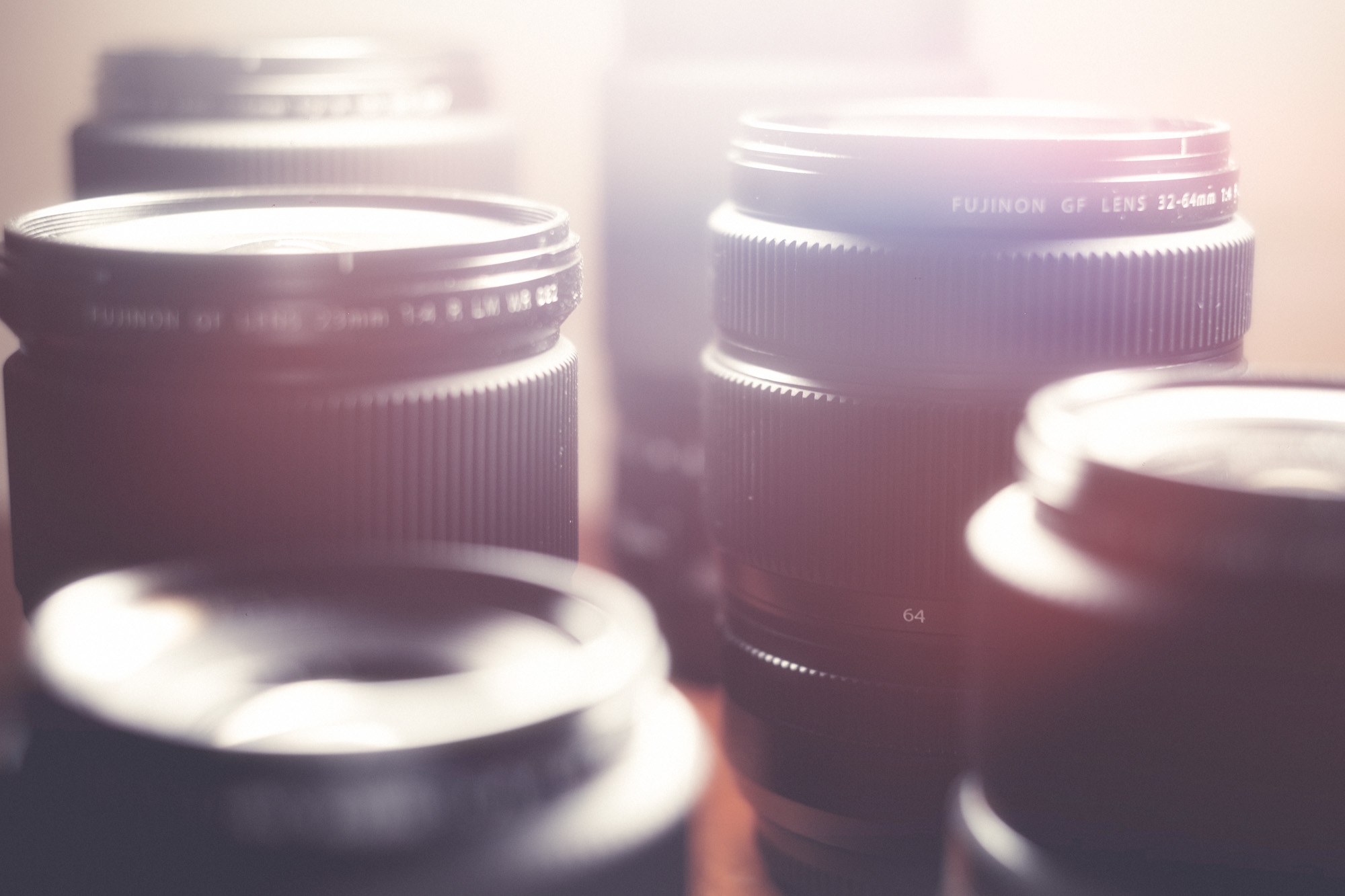If picking your camera correctly raised some tough questions, picking which lenses you want to invest in can be even more tricky. This article explores the ideas and questions regarding some of the award winning lenses in the Fujifilm XF range and beyond.
In a way, this article is linked to the article about buying cameras, but this is not an item by item guide to all the lenses, nor is it an item by item review. Check out the FujiLove Magazine for Jonas Rask’s Lens Guides.
[update, Fujifilm (UK) have a FREE*, Try Before You Buy scheme (if you rent it & then you buy, you can claim cash back)] – click here for more info
When the X Series interchangeable range was launched, we had the XF18mm, the XF35mm f1.4 and the razor sharp yet very slow XF60mm. Jump forward to today we have a very full, rounded and balanced lens range that have been carefully planned and created. There are only things like tilt-shift lenses and ultra long lenses missing from the range, but this is not a massive problem considering how well the Fujifilm cameras deal with none-XF lenses. There are a number of ways to mount a none Fujifilm lens on the system with awesome effect. Click here for more.
After listening back to a podcast with Jonas Rask, it became apparent we both share a love for the slightly aging XF35mm. We both are in agreement that this is one lens that really could do with an update. The 35mm f1.4 is an outstanding lens, and always has been, but Fujinon is clearly showing they could improve the optics and performance of the lens when looking at such primes as the XF 80mm.
Who is Fujinon?
Fujinon (a brand owned by Fujifilm), have been making lenses for a long time, they make some of the most amazing glass used today.
This article looks mostly at the XF range (used by the X Series designed for the APS-C X-trans sensor) and briefly at the GF range (used by the GFX for the larger 44-33mm sensor).
The GF and XF are only part of the range of lenses Fujinon do and they are specially created and optimized for the X Series & GFX series cameras. Fujinon has been making the worlds best TV zoom lenses for years and it’s current UA range of lenses can be seen in studios, events, race tracks & stadiums the world over – including a recent sporting event in Russia you may have heard of! Additionally, they make high-quality Cine Zoom lenses including the HK, ZK, XK and MK ranges.
Look out for lots more info on the MK lenses in the future, if you are interested in video and ready to kick it up a gear – check this link out.
If you want to read up on the company that makes the XF range – the Fujinon website is a great place to start. The important bit to remember is that Fujinon is among the very best lens manufacturers in the world – some would say the best…
Are you up to date?
Making sure you are up to date with your firmware on both your camera and lens is key to getting the very most out of your camera. It is important to remember that even if you have recently bought a new camera from a store, that due to production times and shipping times an updated firmware might be available for you. Fujifilm regularly increases the performance of the products and you could see a dramatic increase in focus speeds and overall use by staying up to date.
- Turn off the camera and put the card in it.
- Turn the camera on pressing “DISP/BACK” button to check the current firmware version.
Check the version of the camera or lens firmware against this list, if you need to update something, just hit the download button and follow the guide.
What do the numbers mean on a lens?
When we talk about a lens, we tend to do it in some kind of code, or that is how it can seem to someone new to photography.
Normally, we describe a lens by the most important elements or aspects of a lens. This would be the focal length, then the widest aperture of the lens.
If the lens is an aperture constant lens (the widest aperture stays the same across the whole of the zoom range), we mention the one figure normally for example XF (XF is the range of lenses) then the focal range of the lens, 50-140mm, then the widest aperture, f2,8 in the case of the 50-140mm. It would be rare to mention the smallest aperture in the name of the lens when talking about them. A none aperture constant lens would show the widest at the longest and shortest focal range, XF 18-55mm f/2.8-4.0 would mean that at 18mm it is f2.8 and at 55mm, the widest aperture is f4.0.
Looking at the front of a lens, we see where all the important information about a lens is normally located. Look at the image of the XF14mm f/2.8 below.
The SUPER EBC denotes a type of coating applied to the lens followed by the red XF showing the which range this lens belongs to. Next, to that, it says 1:2.8 which shows the widest aperture. In this case f2.8. Next, there is an R, which means that this lens has an aperture ring. After that is the filter size of the lens.
Things to think about when looking for in a lens?
What each of us wants from a lens can be super diverse. From person to person, our needs change, and they change from day to day too. Our styles evolve and the circumstances around how we are shooting change too, however, I think I have some top tips about what to look for when you are thinking about adding a new lens to your kit bag.
- Always have a super fast prime.
- If you can, use aperture constant lenses.
- Minimum Focus depth.
- Balance.
- Low distortion
- Don’t be put off by weight.
- OIS is not everything but is REALLY nice too.
- Low chromatic aberration.
- Everything is about aperture.
- Low levels of vignetting.
- Micro Contrast.
- Smooth focus movements.
- Metal construction and contacts.
- Overall sharpness.
- The shape of bokeh.
- The number of glass elements.
What is chromatic aberration?
We know and would see it is as color fringing. Not so much a problem with any XF or GF lens I have used at all, but back in the day, it was more of a worry. You would see it as green or pink highlights appearing in the images near areas of sharp contrast. Wikipedia has some good terms to explain this more in depth – wikipedia.org/wiki/Chromatic_aberration.
Aperture constant lenses.
Zoom lenses have a focal range, lenses that are an aperture constant maintain the widest aperture across the whole focal range of the lens. Look towards the Red Badge XF lenses. Most pro photographers only use constant lenses. At the time of writing, the XF 10-24mm (f4) XF 16-55mm (f2.8) and XF 50-150mm (f2.8) are the only constant lenses, aside from all primes of course.
Primes vs. Zooms
The old rule is that a prime is better than a zoom, and as a prime lens lover myself I really want to believe this, the stats and truth when it comes to which lenses I use the most say otherwise. A top end zoom like the XF 16-55mm, XF 50-140mm or the XF100-400mm is going to be a workhorse for you as much as they are for me. I will be super honest at this point, I did some of the sample images for the launch of the XF16-55mm (at Kenilworth Castle on the X-T1). I remember when I got the e-mail though asking if I would have a look and produce a range of images for the launch, at that time we had the XF18-55mm, and, I was expecting the same but with no stabilization and f2.8 constant. I also thought, since I saw myself as a ‘prime’ photographer, I might not like it. What happened with the launch of that lens changed the way I saw Fujifilm and their intentions for the growth of the X Series. The XF50-140m somehow stepped this up a whole level again with Fujinon creating the best lens in the range until they made the XF 100-400mm that was. In short, the lenses that Fujinon are making for the Fujifilm X Series system are pushing the concept that primes are optically better then zooms to the very edge. What is clear is that the primes are faster, lighter, simpler in design and therefore, less prone to damage due to the less complex nature of the design. Sometimes I carry a range of primes and sometimes I just carry a ‘red label’ XF Zoom. It depends how flexible my shooting day is and my mode of transport that day, a drop in quality is not something I ever think about, but the faster aperture of the primes is.
Some have updated better or newer versions with more controls, but all the zooms have OIS (Optical Image Stabilization) except the XF16-55mm f2.8 lens. Correct at time of printing !!
The lens range we have today looks after a range of people and a range uses with the budget requirements to suit. It is safe to say that the XC range of zooms would struggle up against the equivalent prime lenses, but not as much as you would think at times when looking at the price points between them.
Does Fujifilm have a “kit lens”?
No, it does not.
In short, no, Fujifilm does not have a ‘kit’ lens, but it does often have packages it sells as a combo. The term kit, to me, anyway implies something cheap and not that valuable.
The XF 18-55 f/2.8-4.0 is a very underrated lens in the range, ‘back in the day’ many people did see this lens as a kit lens, and I think wrongly so. When this lens came out it was the only zoom lens – I think (let me know in the comments if not!) The XF18mm, XF60mm and the flawless XF35mm launched with the X-Pro, with the XF18-55mm. As long as you have the updated firmware on the lens, they are amazing to use. The XF18-55mm is pretty much a ‘must have’ if you are shooting video on the go. Combined with the new X-T100, it would make an amazing blogging set up! Small compact, light and OIS.
The ‘pancake XF27mm’, along with the XF18mm & XF18-135mm are lenses that do get passed over sometimes. Give them some love, especially the XF 18mm. At f/2 it is bright and light, yet super compact. Back when the lens first came out it was a little slow and clunky, but the updates fixed many of the problems. The XF18-135mm is another interesting lens – not that old but not that new either. Maybe a lens made more to fill the needs of the hobbyist photographer rather than the pro and built more about hitting a price point than pure optical quality. I have heard other people have both good and bad things about this wide-ranging focal lens but, I do have one and I do like to use it, So here are thoughts. It’s a great starter lens, but a photographer with aspirations would grow out of this lens if looking to push creative options and shoot in more testing environments. Check out this article featuring the XF 18-135mm.
The XF27mm is another super compact lens designed for travel – Jonas has a great write up about this lens in the April edition of the FujiLove magazine.
An underrated classic…. maybe!! I have heard many things about the XF18mm f/2. I love it. Check out more here.
Micro Contrast
This is what, to me, a good lens is all about. Being able to resolve the slightest detail and contrast in any given image is what you want your lens to do. Some lenses are better than others but using the correct lens hood or a bigger matte box is always going to the lens render the contrast as flare is reduced. Some lenses have special coatings such as the XF50-140mm, XF16-55mm and XF16mm f/1.4 all have the Nano GI coating.
To sum up, many people would say Macro Contrast is linked to images having a ‘3d’ feel or images that really ‘Pop. The color tonality is & sharpness rendered better through the lens.
XF vs XC
If you are a Fujifilm X Series user or looking at buying an X Series camera, these are the two different types of lenses you will be looking at. The main difference between the two are that XF lenses are made of metal with a metal lens mount whereas an XC lens is mostly plastic construction. Being made of plastic does mean that the lenses are lighter however they are not quite as robust as the metal construction of the XF lenses. Another difference is the aperture ring and toggle switches. XC lenses do not have an aperture ring or a toggle switch for OIS, whereas the XF lenses with the exception of the XF27mm pancake lens do have aperture rings and a toggle switch for OIS.
The Red Badge lenses
The XF Red Badge lenses are the highest standard of XF lenses and they have acquired their title above all other XF lenses due to their performance in focusing speed and image quality. There are currently three XF Red Badge lenses which are the 16-55mm f/2.8, the 50-140mm f/2.8 and the 100-400mm f/4.5-5.6. Both the XF16-55mm and the XF50-140mm are aperture constant. The XF100-400mm has been designed for handheld shooting and includes a 5.0 stop image stabilization system as well as a linear motor for fast autofocusing. This makes it a fantastic lens for wildlife and motorsports. All three of the Red Badge lenses are also weather sealed which makes them suitable to use in many different climates under all kinds of weather conditions.
WR vs no-WR
Often the peace of mind of having weather sealed kit can mean the difference of going out for a walk in the rain and taking some fun shots and not heading out at all, resulting in missed opportunities. But how important is WR really? WR lenses have sealing applied in various parts of the lens to keep dust and water out of the lens, however, bear in mind that WR does not mean waterproof so if you do drop your lens in a river, water will get inside. The cool thing about the WR zoom lenses is the added feature of an air ventilator. You see with a lens like the XF16-55mm when you adjust the zoom air moves inside the lens barrel and smooth air movement is needed for smooth operation. But because the lens has been sealed there isn’t much room for air to move freely inside the lens. So an air ventilator has been added to the bottom of the lens barrel where “weather resistant” is written allowing air to move freely and effectively preventing dust and moisture from getting into the lens.
What is the ‘Fuji Trio’?
All announced together, the 3 lenses cover 23, 35 and 50mm focal ranges. They are compact, well priced, weather sealed and all open to f/2. These are great lenses to start with and a great entry in the XF lens range. Many photographers who don’t need the extra light from the earlier and more expensive XF35mm 1.4 version of the lens actually prefer the smaller construction and added weather sealing of the f/2 version, plus it does have a faster focus speed. Check out this article about picking the right 35mm lens for your camera system.
The Fuji Trio is very popular with people starting out into the Fujifilm system. Check out this article to learn more about how they could be all you need for your photography.
Jargon terms explained
R – You will see the R next to most of the XF lenses, for example, the XF35mm f1.4 R. This simply means that this lens has an aperture ring. The aperture ring on Fujifilm lenses is electronic and is not controlled by gearing and can be changed in 1/3 stop increments
LM – This means that the lens has a Linear Motor. Linear Motors are used for autofocus and manual focus and provides good speed and quiet operation. Fujifilm lenses that do not use a Linear motor instead use a coreless DC motor
OIS – Stands for Optical Image Stabilization. OIS is used in lenses to move some of the optical elements to help correct camera shake and provide sharper images when using a slower shutter speed
Macro – This means that the lens is a macro lens. Macro photographs are extreme close-ups of very small objects and the final printer is normally larger than life size
EBC – Electronic Beam Coating, this is used to minimize flare and ghosting. It works by increasing the light transmittance which lets more light pass through the glass towards the sensor which in turn means less light is reflected off of the lens
Nano – Nano-GI (Gradient Index) coating technology, which alters the refractive index between glass and air, ghosting and flare are effectively reduced for diagonal incident light
Bokeh – The aesthetic quality of the blur produced in the out-of-focus parts of an image produced by a lens
Open wide – Refers to using the lens at the widest f-stop/aperture
Prime – A prime lens is fixed at a given focal length
What are the Macro options?
At the moment there are only are two true macro lenses. One in the GF range and one in the XF range, that one being the XF80mm f/2.8 R LM OIS WR Macro. It is an absolute cracker of a lens. Check out Jonas’s Lens Guide in the FujiLove Magazine for more on this lens or listen back to this podcast about his experiences with it. The GF120mm is your GFX macro option.
Where to buy?
As we covered in the article about buying cameras, make sure you have some quality hands-on time with any lens you are looking at buying. Just reading other peoples views and opinions should only be taken into consideration, not as gospel, no matter who the photographer. Buying a lens online, just like buying a camera online can lead to warranty problems as well as support problems. Get your information from trusted sources then go and test the lens in person. If you can, I would always suggest a try before you buy scheme, or use a rental service like Hire-a-Camera in the UK. This leads to the next ideas, Renting as a long-term plan?
Rent or Buy?
As suggested, renting lenses before buying them gives a great chance to really put the lens you are looking at in stressful situations and seeing how you and it cope.
For lenses such as the XF100-400mm, XF80mm or XF10-24mm, you might not have a regular and constant use for the specific scope of the lens. Renting it for a job or trip is a great way to save money and still have the lens to use. It super simple to log on to the Hire-a-Camera website and book out the lens, then it arrives in a custom fit PeliCase ready to go, super simple. This means that you can have all the lenses you need, when you want them without the hassle and cash investment.
If you are in the UK, you might be able to get a FREE* rental (if you rent it & then you buy, you can claim cash back) … Click here for more info
In the UK, Fujifilm has linked up with Hire-a-Camera and now offer a FREE, try before you buy scheme. Click here for more info.
GFX lens range
The GF lenses are awesome, for me anyway. There is one main feature side from the intensely amazing build quality and ability to resolve over 100mp on to a 44-33mm surface, that makes me love using the GFX and GF lenses. The Comand dial can be found on the aperture ring and when selected gives instant use of the rear dial to control the aperture. Select the same on the shutter speed dial and you have full DSLR style control for your camera. Awesome!! This is something I would love to see brought across into the XF range.
At the moment, this is the lens range :
- GF23mm F4 R LM WR
- GF45mm F2.8 R WR
- GF63mm F2.8 R WR
- GF110mm F2 R LM WR
- GF120mm F4 R LM OIS WR Macro
- GF250mm F4 R LM OIS WR**
** due late 2018
*Fujifilm rental, try before you buy, only applies to the UK, if you rent it & then you buy, you can claim cash back.
Bonus Videos
Dave Kai-Piper prepared two bonus videos on the Fujinon XF16-55 f/2.8 and the XF50-140mm f/2.8 exclusively for FujiLove subscribers:
TO WATCH THE BONUS VIDEOS YOU MUST BE A FUJILOVE MAGAZINE SUBSCRIBER.
Sign in here or subscribe to FujiLove Magazine now and get immediate access to the subscriber area and all premium FujiLove resources including all issue of FujiLove Magazine, LIVE photography webinars, PDF Handouts, Fuji X support line and more.


